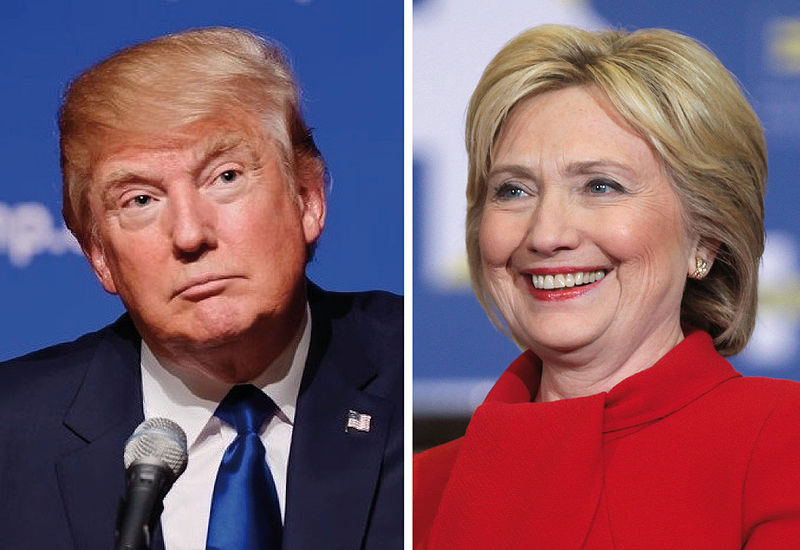
Why Winning Politics Is Now Tied to Big Data Analytics

(Rob Hyrons/Shutterstock)
One of the storylines in this year’s presidential election is how both major political parties are using big data analytics to inform their decisions and try to get ahead. But what you may not realize is how pervasive big data has become up and down the ticket. Here’s an inside look at how two of the leading analytic firms are helping their parties win with analytics.
In the last two general elections, the capability of Barack Obama’s campaign team to effectively wield big data analytics was seen a factor in his victory over his rivals. But that advantage has all but disappeared this time around, says Tom Bonier, the CEO of TargetSmart, which provides big data analytics and services to the national and state Democratic parties and their political allies.
“The playing field is a lot more level now than it was then,” Bonier tells Datanami. “In 2008, the narrative was that Democrats were so much smarter and so much farther ahead than Republicans in this area, and that’s just not the case at all at this point. It’s a very level playing field in terms of the innovation that’s going on, on both sides of the aisle.”
David Seawright, director of analytics and product innovation from Deep Root Analytics, which provides analytics to the national and state Republican parties and affiliated groups, agrees with that assessment.
“Coming out of 2012, one of the big lessons on the right was we need to be doing this, we need to be doing this better,” Seawright says. “So there’s been big investments, not only on party platforms, but in the formation of companies like ours and Deep Root to really dive in and perform this service to our clients.”
And that service is booming. Thanks to the combination of new data sources, the democratization of advanced analytics, and affordable access to massive computational power, political campaigns in 2016 are feasting on data analytics in a way that was never even possible. From the national campaigns to races at the state and local levels, big data analytics is having a big imprint on our national politic.
‘Weaponizing’ Data

Not only do the presumptive candidates for the presidency have more big data firepower at their disposal than their predecessors, but so do state and local reaces. (Source: Wikimedia Commons)
Deep Root was born out of efforts by the Republican Party to compete more effectively with Democrats on big data analytics. The company is essentially the big data arm of the GOP, providing data and analytic services to Republicans running for office–from the president on down to state legislative races.
“The word we like to use is to weaponize, or actionize–to apply some action,” Seawright says. “We’re able to provide these sorts of services and deliver these sorts of insights to a lot of different campaigns all at once, a lot of different camp gains up and down the ballot. It’s no longer just a top of the ticket luxury–it’s something everyone can and should be doing.”
Both Deep Root and TargetSmart use software from Alteryx to help them ingest, cleanse, blend, and analyze massive amounts of data from a variety of sources. One of the most impactful ways this analytic software is being used it segmenting and scoring all voting-age Americans, and using that information to optimize their spending on media–those all-important TV ads, in particular.
Deep Root uses its analytic models to tell political campaigns where they can get the biggest bang for their TV buck. As Seawright explains, analytics play a big role in day-to-day decision making.
“Our data will inform where our clients place their ads based on where their targeted audiences are most likely to be watching,” he says. “And we also inform the bookend of the buy, by giving clients situational awareness, not only providing accountability for what they’re doing on the air relative to the target audience, but also what opponents or allies are doing on the air relative to your target audience, which allows them to be strategic with their ongoing placement and to be smart not only about putting their ads in the most efface and efficient places, but also being reactive to the marketplace based on what other people and other groups are doing on the air.”
TargetSmart provides a similar analytics service. But the group is taking its “360 degree voter contact” technology a bit further than its GOP rival by using data to optimize action not just on TV ad buys, but also call center activities, traditional mail campaigns, and neighborhood canvassing.
One to One Politics
Presidential campaigns have traditionally attracted bigger sums of money than races for other seats. But thanks to the Supreme Court’s 2010 Citizens United decision, which freed up political action committees (PACs) to spend as much money on advertising as they like, this year’s campaign looks to take TV spending to a whole new level. The combination of Super PAC dollars and powerful analytics tools give campaigns potent weapons to get messages out in a much finer-grained manner than ever before (although they must avoid the appearance of coordinated efforts).

Political campaigns have gotten much better at targeted marketing (Jirsak/Shutterstock)
The use of targeted analytics is fairly new, according to Bonier, who was involved in Obama’s re-election campaign via Clarity Campaign Labs, which he founded in 2012. “It’s something that’s been around,” he says. “But if you looked at the 2012 campaign, it was really just driving niche ad buys. A small fraction of the Obama campaign’s overall ad budget was spent on targeted advertising. That’s not going to be the case [in 2016]. I would say almost all of the ad buying, at least at the presidential level, will be happening through targeted analytics.”
Thanks to the ongoing democratization of advanced analytic software, campaigns have all sorts of leverage predictive and statistical models to use, says Alteryx president George Mathew. “What you’re hearing from both sides of the political spectrum is…this is actually the new normal,” Mathew says. “The creativity, the capacity from people being more ensconced in it, is something that continues to evolve on both sides of the spectrum.”
 The wide proliferation of skilled data practitioners is also playing a factor, says Seawright. “In addition to a cultural change of these sort of things being adopted and accepted, there are also practical changes in the marketplace with the new data sources, newly available technology and softwares to be able to handle it,” he says. “And then certainly part of that come with increased human talent to be able to do the work and deliver it for the clients.”
The wide proliferation of skilled data practitioners is also playing a factor, says Seawright. “In addition to a cultural change of these sort of things being adopted and accepted, there are also practical changes in the marketplace with the new data sources, newly available technology and softwares to be able to handle it,” he says. “And then certainly part of that come with increased human talent to be able to do the work and deliver it for the clients.”
Next Up: Social Analytics
Both firms are also venturing beyond TV and into digital mediums, such as social media. But the going is tough in social, as the data is a little more sketchy, and it’s not so easy to know who you’re reaching with media buys. As the classic old New Yorker cartoon says, “On the Internet, nobody knows you’re a dog.”
“Digital targeting is notoriously unreliable,” Bonier says. “You don’t know you’re getting the people you need to talk to, so campaigns haven’t spent nearly as much on digital as they have on broadcast TV and other forms of communications.”
TargetSmart is doing some innovative work in this area, with the hopes of impacting the 2016 election. The company has matched the entire 255 million person national voter file to digital platforms like Facebook, Google, Yahoo, and MSN by using personally identifiable information (PII).
Progress is being made here, and Bonier hopes that 2016 will provide a breakthrough. “We can’t match every single Twitter user to a registered voter, but you get to a critical mass where that’s useful insight,” he says. “If you do that right, its’ feeding into your models. Having the ability and the tools like Alteryx to be able to use that information in an ongoing and  dynamic sense is a pretty critical and important advance. That’s going to be a big thing about what comes out of this election.”
dynamic sense is a pretty critical and important advance. That’s going to be a big thing about what comes out of this election.”
Deep Root is also doing work in social media, says Seawright. “We’re in a marketplace where there are consistently newly available data sources that are being added to the marketplace,” Seawright says. “Specifically we can use social media data to help us understand not only the way that people consume data more broadly, but also the way they engage with it, which can be a more valuable metric for us.”
Going forward, it’s clear that big data analytics is now table stakes for big political campaigns. If there is money being spent on TV ads–which precludes races like librarians and neighborhood dogcatcher–then big data analytics will be indispensable in helping the politicians spend the money in the most effective way possible.
Related Items:
Big Data and the Race To Be President
How Data Analytics Shaped Election Day 2014
Big Data Analytics Give Electoral Edge






























